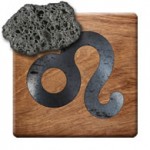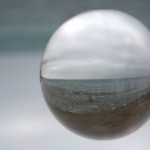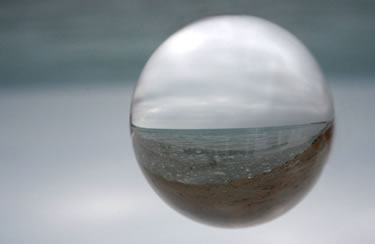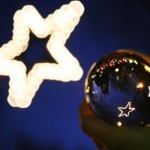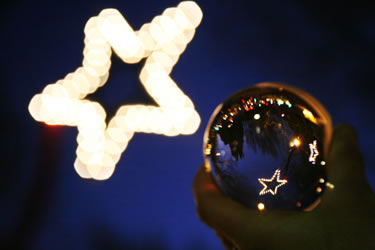
Aries (March 20-April 19) — It appears as though a new chapter and another (quite separate) new verse are opening up for you. For the near future at least, it may seem as if you are living through both a song and a story at once. The story probably has to do with some newfound freedom you’ve labored for weeks to write into your private life. Your new song, on the other hand, is almost certainly represented by a new level of community involvement that seems, more than anything else, to have chosen you. Your mission is therefore straightforward, if not simple: to remain whole. In order for that to happen, it will be important for you to arrange things so that your personal and public life support each other rather than being at odds. Eschew compartmentalization at every turn. Instead, use your personal moments to support testing and defining yourself in the world, rather than letting them sap those efforts. — by Len Wallick
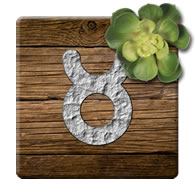
Taurus (April 19-May 20) — You would help your own cause by paying special attention to the people, places and situations you take for granted the most. Consider developing your enhanced awareness in three steps. The first step will require you to both catch yourself and acknowledge being caught in moments of inattention, without feeling either diminished or defensive about the experience. The next step will require a concerted ongoing attempt to remember when you are most vulnerable to ‘spacing out’, then applying yourself to see those situations coming. Finally, once you know when to focus on focusing, make a special effort to see what’s unexpected or new in what you have otherwise become accustomed to. This is not a good time for you to drive on cruise control or fly on autopilot in any sense. Rather, it’s your time to update and ground your sense of all you know and love best. — by Len Wallick

Gemini (May 20-June 21) — For you, and for the next several months, the spotlight of attention will likely be a fickle thing. If you are now the subject of acclaim, you may do yourself a service to remember that a season of exaltation is often fleeting. On the other hand, if others have placed you and what you have to offer on their back burner, count your blessings, but don’t count yourself out. Interestingly, regardless of your relationship to the spotlight now, your strategy for getting to a playable, even promising endgame will be much the same. To begin with, strive to be more discriminating regarding what others see of you. Pay attention to your appearance, and be conscious of whether any of your habits will detract from your better qualities. Most importantly, choose where you want to shine. It’s not necessary — or even advisable — to take center stage at all times; exhibiting occasional grace will get you quite far enough. — by Len Wallick

Cancer (June 21-July 22) — You are not a machine. Do not be unrealistic in expectations of yourself. You are a unique and exceptional human being, not a human doing. You have intrinsically human qualities that make you special and worthy of receiving all the love you have to offer and then some. Yes, you should allow yourself to be inspired by others in setting (or resetting) your aspirations. Even so, it will do you no good in the long run to cultivate ambitions through which you pretend to be something or somebody other than your best and most authentic self. Since this appears to be a time to redefine (or at least refine) your mission while also remembering who and what you are, be realistic. Look back no further than four or five weeks. If you can manage to recall and apply only your most recent experiences and the lessons learned, you will have (and be) enough to get further ahead without getting lost. — by Len Wallick
Leo Birthday Reading: Roar Into Your Solar Year
How can this chart be for all Leos, when you nailed each important event, prompting, frustration and calling of my personal life all in this one reading? OMG. — CM
Dear Friend and Reader:Believe it or not, you still have time to take advantage of the discounted pre-order price on the 2015 Leo Birthday Reading, at just $24.95. As you likely know, after these readings publish, the price increases.
If you or someone you love has a Leo Sun, Moon or rising sign, this is a gift sure to make them purr.
The reading focuses on Venus’ retrograde phase, and its extended visit to your sign. Venus will not fully leave Leo until early October — and Eric will have a lot to say about how you can use this energy to boost your self-esteem and courage.
The astrology also indicates that you likely have an important mission for the coming year.
Eric was hoping to record the audio for this before departing on his much-needed vacation. Unfortunately he was not able to do so, and it will now publish soon after his return. This means you can still get the Leo Birthday Reading at the lowest, pre-order price — and we know it will be worth the wait.
Your Leo Birthday Reading includes two sessions of astrology of at least 30 minutes each, a tarot reading using the Voyager Tarot deck by James Wanless, and an extended written description of your astrological sign. Eric will provide images of the charts and tarot spread he uses.
When you order, you’ll also receive instant access to last year’s reading, so you can review it — and all of your progress these last 12 months — as Venus backtracks.
The 2015 Leo Birthday Reading is an essential tool for the coming year, for everyone with Leo Sun, Moon or rising. Pre-order it now for just $24.95, as a gift for yourself or the Leo you love.
Best wishes,

Amy Elliott
Planet Waves Client Services
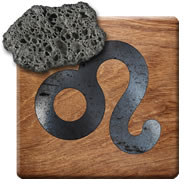
Leo (July 22-Aug. 23) — Here’s looking at you, kid. Actually, let’s change that line. Instead of allowing us to lift a glass in salutation to your shining countenance, encourage us to look for (rather than at) you. After all the effort you have put in to find yourself since your birthday last year, you don’t want to keep what you have discovered under a bushel basket. Instead you will want to show the world what has become of you. To do so, step away from the grindstone for the next few weeks at least. Cut back on the chores so you can get out more. Hang out with old friends you might have neglected, and give new acquaintances more than a passing glance. Take time to converse for its own sake. If you do so, you will not need to fear boredom or small talk. What you have developed and discovered in yourself over the past 12 months is subject matter you are bound to see reflected in, and by, others. — by Len Wallick

Virgo (Aug. 23-Sep. 22) — When people (most likely from your distant past) have admonished you not to put off until tomorrow what you can do today, they were almost certainly speaking to responsibilities, work, chores and drudgery. Knowing you, you took that advice to heart and integrated the work ethic you received into a fine appreciation for diligence and your imperative for industriousness. The downside of strictly conscientious behavior, however, is that as it stifles your own playfulness, it can make you inclined to be extra strict with others, and pass on to them more than just a stolid warning to favor the proverbial ant over the legendary grasshopper. It’s time for you to add a bit of your own experience with curiosity’s ability to cure rather than kill. There’s reason as well to share with others how simple, undirected play can foment joy without precluding wealth. — by Len Wallick
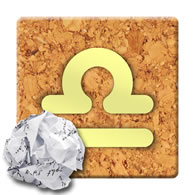
Libra (Sep. 22-Oct. 23) — It’s likely that you have paid your dues in full over the past two or three years. Therefore, do not think of yourself as owing any more to others than is absolutely necessary to keep your relationships in reciprocal balance. Let go of obligations you have already met, no matter how fulfilling it was for you to meet them. Instead, take some time to go back and pick up where you left off with yourself. Take stock of all you have passed up in order to be of selfless service, and consider how and when it might be appropriate to be a little more selfish to serve your own (possibly arrested) development. Think of what you can be rather than what you can do. Release the past and reach into the future. Who knows, if you reach far enough, you might actually be able to touch and grasp another hand previously unseen, which has long been reaching for you. — by Len Wallick
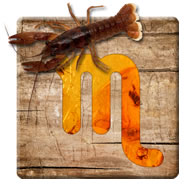
Scorpio (Oct. 23-Nov. 22) — You are almost done. Whether you know it or not, the toil and even tears that have possibly accompanied you for years have almost run their course. In place of what you have endured, something enduring will remain. As you might already have noticed, your life’s trials and your responses to them have slowly but steadily been forming a structure that will contain much of what is yet to come for you. To be more content with what that container finally turns out to be, attend to it now. Look around you and note how the order and form of your life has changed, and think about how you want things to finally shape up. While this is probably not a good time to tear your life down and start over, it’s not too late to make more room where you need it and even trim a little excess so as to lighten your load. — by Len Wallick
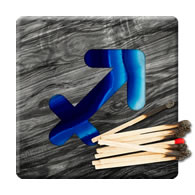
Sagittarius (Nov. 22-Dec. 22) — Regardless of what your devotions are or where your enthusiasms lie, you know that attending to them long enough and consistently will show results. You also know from experience that those results are not likely to accrue with perceptible momentum. Instead, a prolonged investment in effort will most often test your faith before you wake up one fine morning to a gratifying realization that you have ‘made it’. The astrology indicates you are about to embark on another prolonged voyage of endeavor, which will once again challenge you to keep faith that a substantial payoff is somewhere over the horizon. To keep yourself going, even when immediate gratification is nowhere to be found, set an intent now. Let that intent be your determination to focus on the quality of your upcoming journey. Allow the destination to take care of itself. — by Len Wallick

Capricorn (Dec. 22-Jan. 20) — If you are not ‘feeling it’, there is no reason to extend yourself to the limit now. Don’t feel bad if something tells you to hold back. While it’s inevitable that you will someday want to push for the top of the symbolic mountain you have long been ascending, the timing has to be right. Just as with actual climbing, you will need all external conditions to be optimal within reason. It will also be necessary for you to commit to a specific path of ascent. In order for that to happen, however, your internal conditions will need to develop to a point where you feel assured of your success, and you’re impatient to git ‘er done once and for all. In the meantime, it is vital that you at least take no steps back unless absolutely necessary for your survival or wellbeing. So take care of yourself even as you bide your time. When the time comes, you will not only be ready but fully able to conquer that summit. — by Len Wallick

Aquarius (Jan. 20-Feb. 19) — The very heavens know that you are well aware what you are about. The question is whether you are still clearly seeing the vision you set out to pursue, and are fully present to it. While things may not have gone according to your original plan, you also know that much of life is what happens while those plans are being made. You also know that going through changes is not the same as going through defeat. Only your choice to give up can result in failure for you at this point, and you don’t want that. What you have already accomplished stands on its own as a legitimate success, even though you are entirely right to have even higher aspirations. Additionally, the opportunities you have rightfully earned are too good to simply squander. Therefore, even if you continue to err here and drop a stitch there, do everything you can to persevere, for doing so will indeed serve to further you. — by Len Wallick

Pisces (Feb. 19-March 20) — Things are about to get very interesting for you in a promising way. The results will not be immediately apparent until about this time next year. Even so, you will be able to go a long way toward determining the outcome for yourself if you can simply define and whole-heartedly accept what satisfaction means for you. Doing so could very well force you to make some choices between material and spiritual satisfaction, which will not necessarily entail compromise. Indeed, it’s very probable you will be quite pleasantly surprised by just how often you can have your proverbial cake and eat it too. In other words, the next 12 months or so will not be about choosing one thing to the exclusion of another. Rather, the focus of your life will probably come down to what card needs to be played first so every card that follows will be set up to be a sure winner in turn. — by Len Wallick

